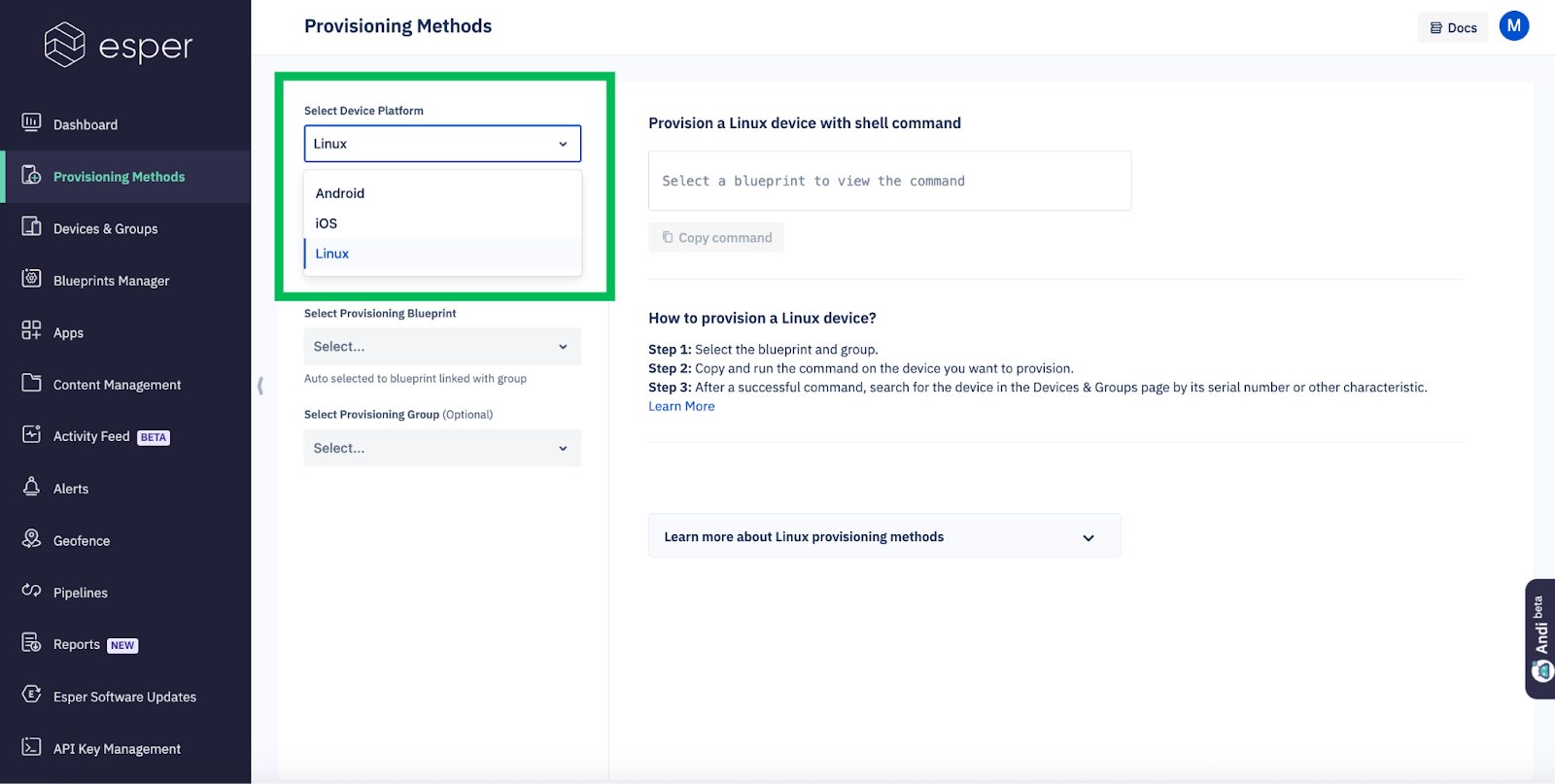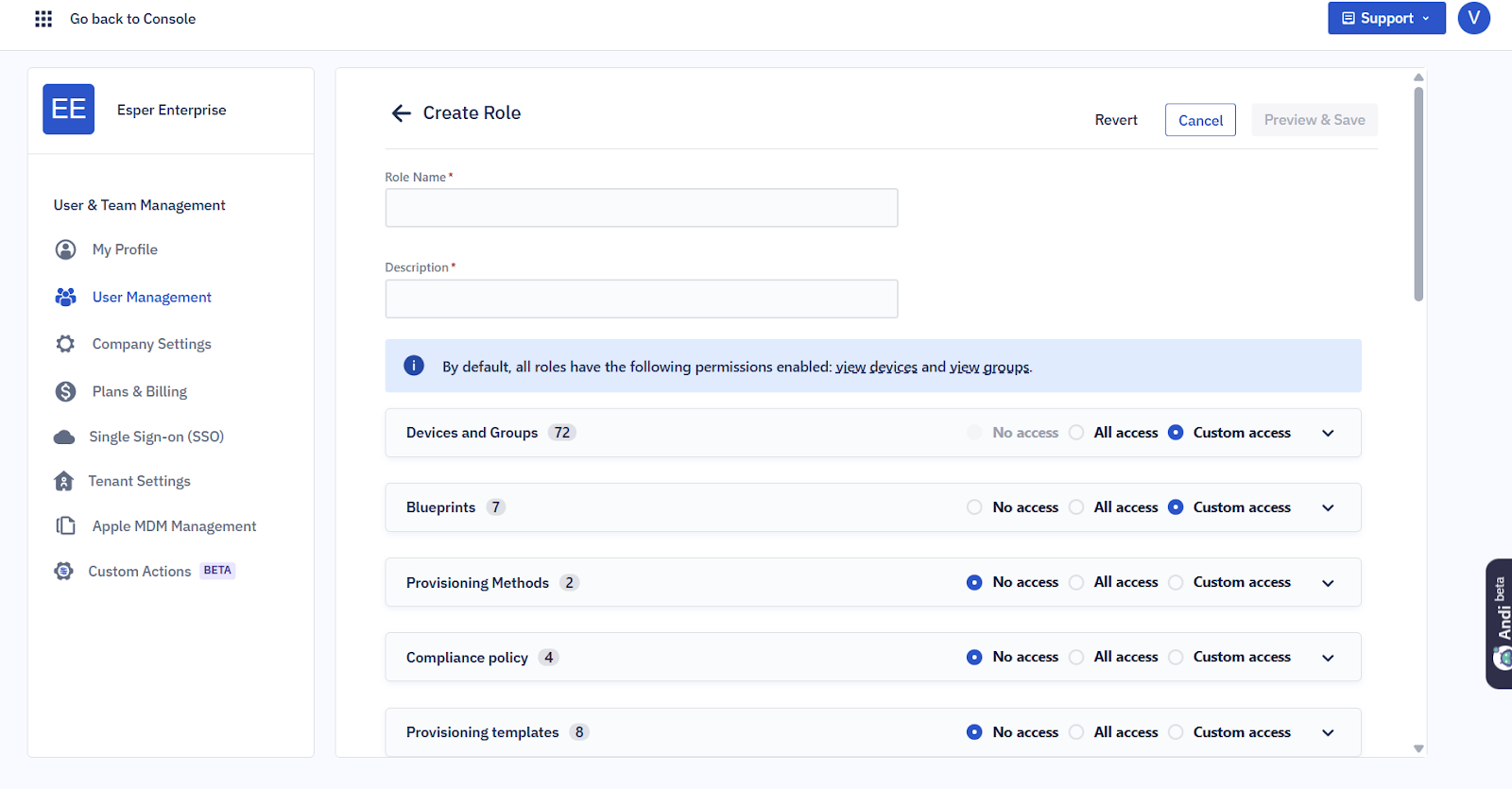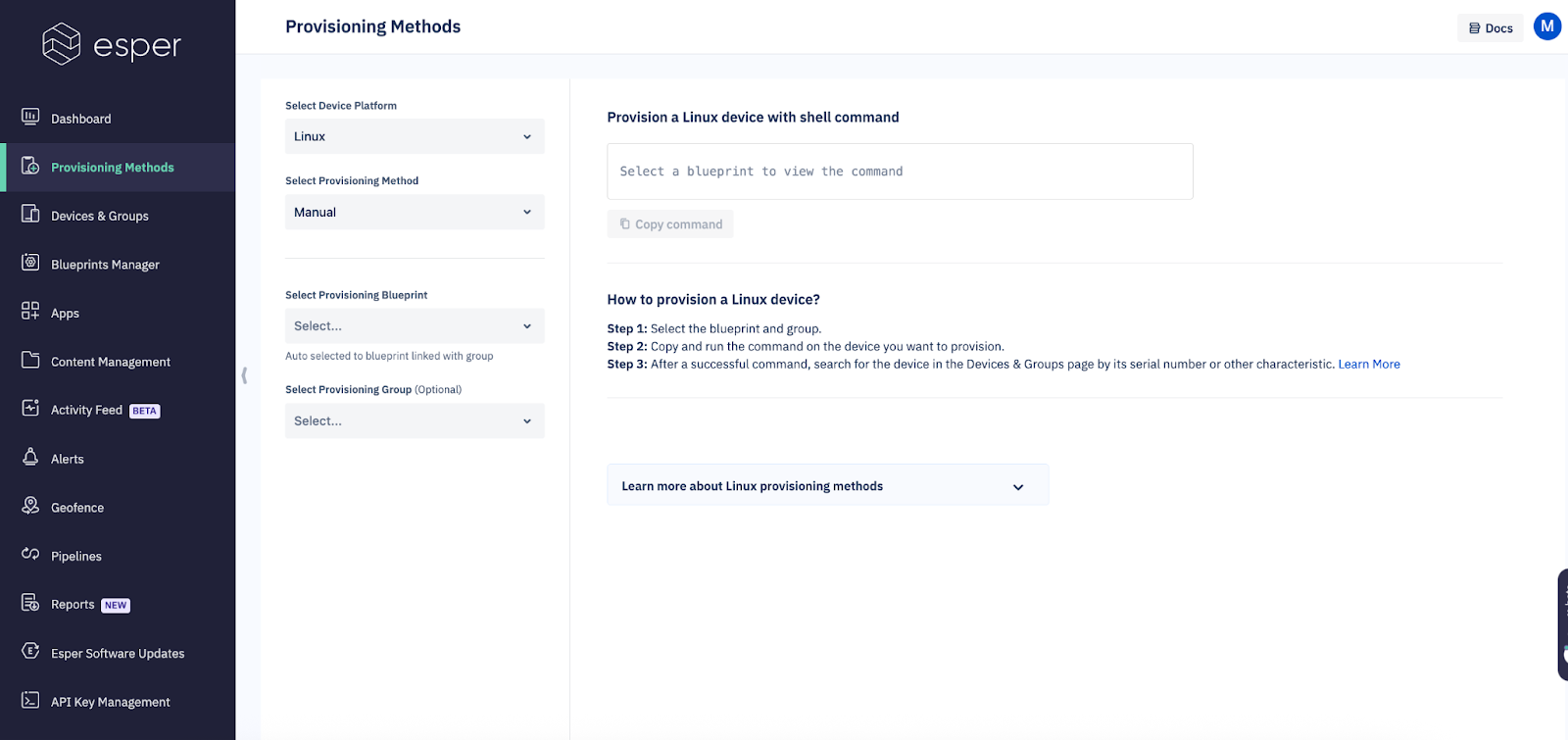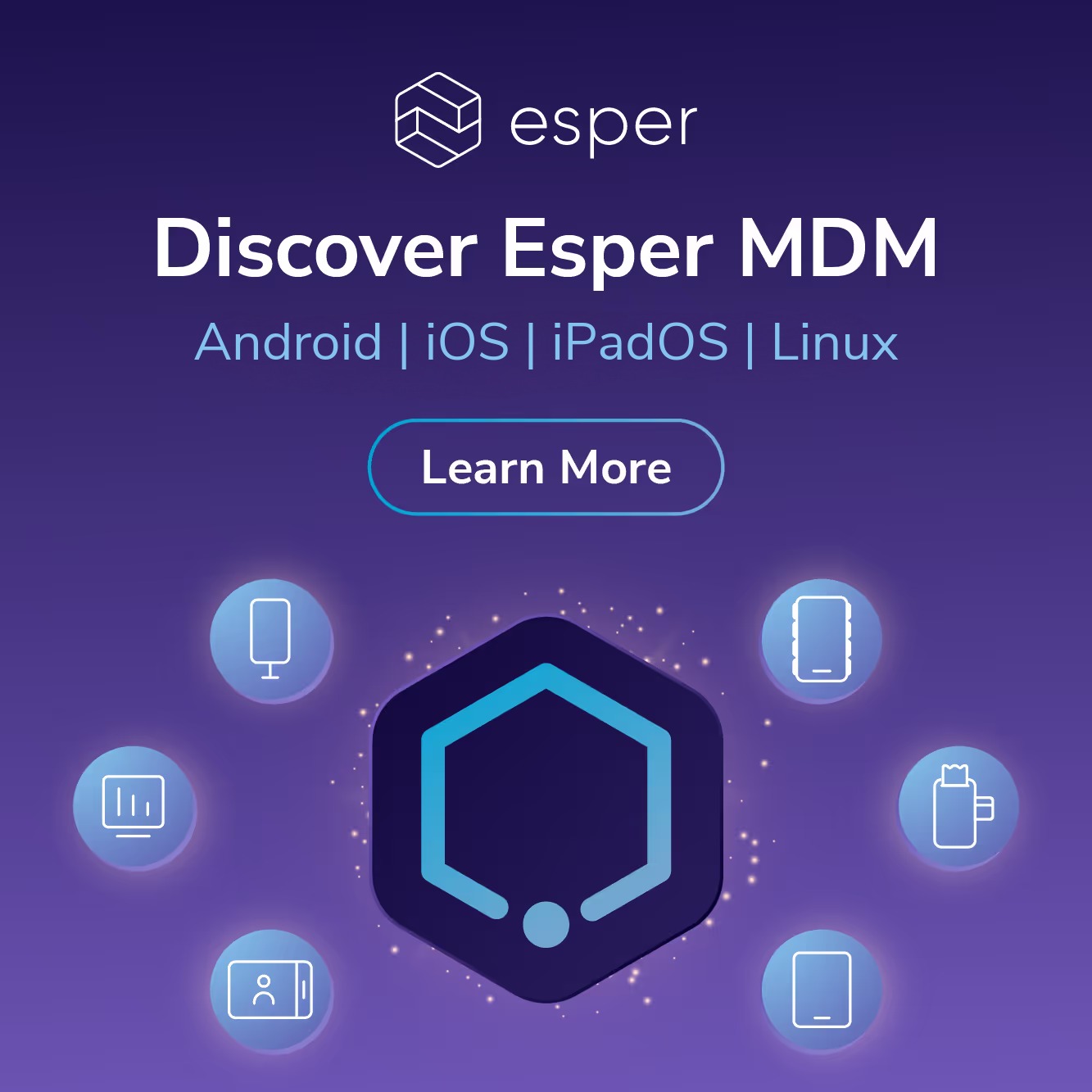Linux powers critical infrastructure everywhere — from kiosks and digital signage to retail point of sale (POS), kitchen display systems (KDS), and robots. But deploying and managing Linux devices at scale has always been complex, fragmented, and risky. Too often, success depends on a single overburdened Linux expert.
Today, Esper officially launches its Linux Device Management solution, included in our mobile device management (MDM) platform. In adding support for Linux device fleets, we’ve taken into account customer feedback and common industry pain points to develop a solution that makes it easier than ever for developers and IT operators to deploy and manage Linux devices at scale.
Why IT and Dev Teams Will Love It
Esper for Linux gives both IT and developers the power and flexibility of the terminal — without the setup hassles and security risks.
With built-in features like Remote Access and Control, Seamless Provisioning, Virtual Network Computing (VNC) integration, and Role-Based Access Control (RBAC) we’re delivering the capabilities customers consistently say they need for successful deployments. As leaders in the MDM space, we believe Linux deployments demand these essentials — so we built them in from the start.
Enable remote operations
Auto-configure devices: Upload your device serial numbers to the Esper Cloud, and auto-apply your configuration via Blueprints. And with the help of seamless provisioning, your pre-provisioned devices auto-configure the moment they’re turned on: It boots up, connects to Wi-Fi, installs the right apps, and locks down settings — all with zero on-site IT setup.
Seamless Provisioning. Seamless Provisioning locks devices into their ideal state using Blueprints. Wi-Fi, display settings, apps — everything is configured and ready.
Troubleshoot from anywhere: Access devices remotely via remote terminal, or via Virtual Network Computing (VNC). Issue commands and view outputs in real time, without needing on-site support.
Remote Terminal. An example of rebooting a device, when down, remotely.
Remote Viewer. Full remote desktop access via VNC, straight from your browser — no plugins required.
Automate Linux device management at scale
Cut repetitive steps: Restart a service or run a script with a single click. Custom Actions let you create console buttons that safely trigger scripts — like restarting a device — so frontline staff can act quickly without escalations.
Custom Actions. Create no-code controls in the Console — tied to RBAC — so anyone safely manages Linux devices.
Configure and update at scale: Blueprints let you configure one device exactly how you want it — then replicate or update your ideal setup across your entire fleet. No more inconsistent setups, unnecessary troubleshooting, or time wasted.
Blueprints. Replicate your ideal setup at scale.
Move files seamlessly: Pull logs, push configs, send APKs — no USBs, no email zips, no workarounds needed.
Push configurations — for example, create a Custom Action to reboot devices when needed.
Get unified visibility and security
Every device, unified fleet management: Manage Linux, Android, and iOS devices from one dashboard, with one policy system. Fewer tools, fewer silos, more control.

Secure, with complete visibility: Granular access with RBAC, easy compliance enforcement, and precise monitoring with built-in event feeds make it simple to secure and manage every device.

The Real-World Outcomes of Linux Device Management
We designed Linux Device Management based on customer feedback to empower anyone—even non-technical teammates—to operate devices safely and effectively. The results:
- Faster rollouts at scale: Using Esper Blueprints, one team preloaded LLM packages, services, and OS settings. Devices booted up ready-to-use every time, cutting deployment time dramatically.
- Streamlined robotics fleet management: A company managing delivery bots and reception assistants consolidated diverse software stacks into one platform with modular Blueprints, improving efficiency and consistency.
- Reduced manual workloads: Linux experts shifted repetitive scripting tasks—like restarting services or toggling Bluetooth—into RBAC-protected console buttons. Junior staff could execute actions easily, no CLI required.
In beta testing, customers gained faster rollouts, higher efficiency, and more time for strategic work. Complex, cutting-edge fleet strategies became possible—without sacrificing control or scalability.
Access and Pricing
Linux Device Management is offered on a per-device basis for all Esper users. To get started, log in to the Esper console, go to Provisioning Methods, and select Linux from the Device Platform menu.

Linux Management Doesn’t Have to Be Manual
Ready to simplify and scale everything from kiosks to Kitchen Display Systems (KDS)? Whether you're managing 50 or 50,000 devices, Esper gives you the tools to move faster, stay secure, and scale smarter.
See Esper in action — try it today.
FAQ
Keep Exploring






.avif)








